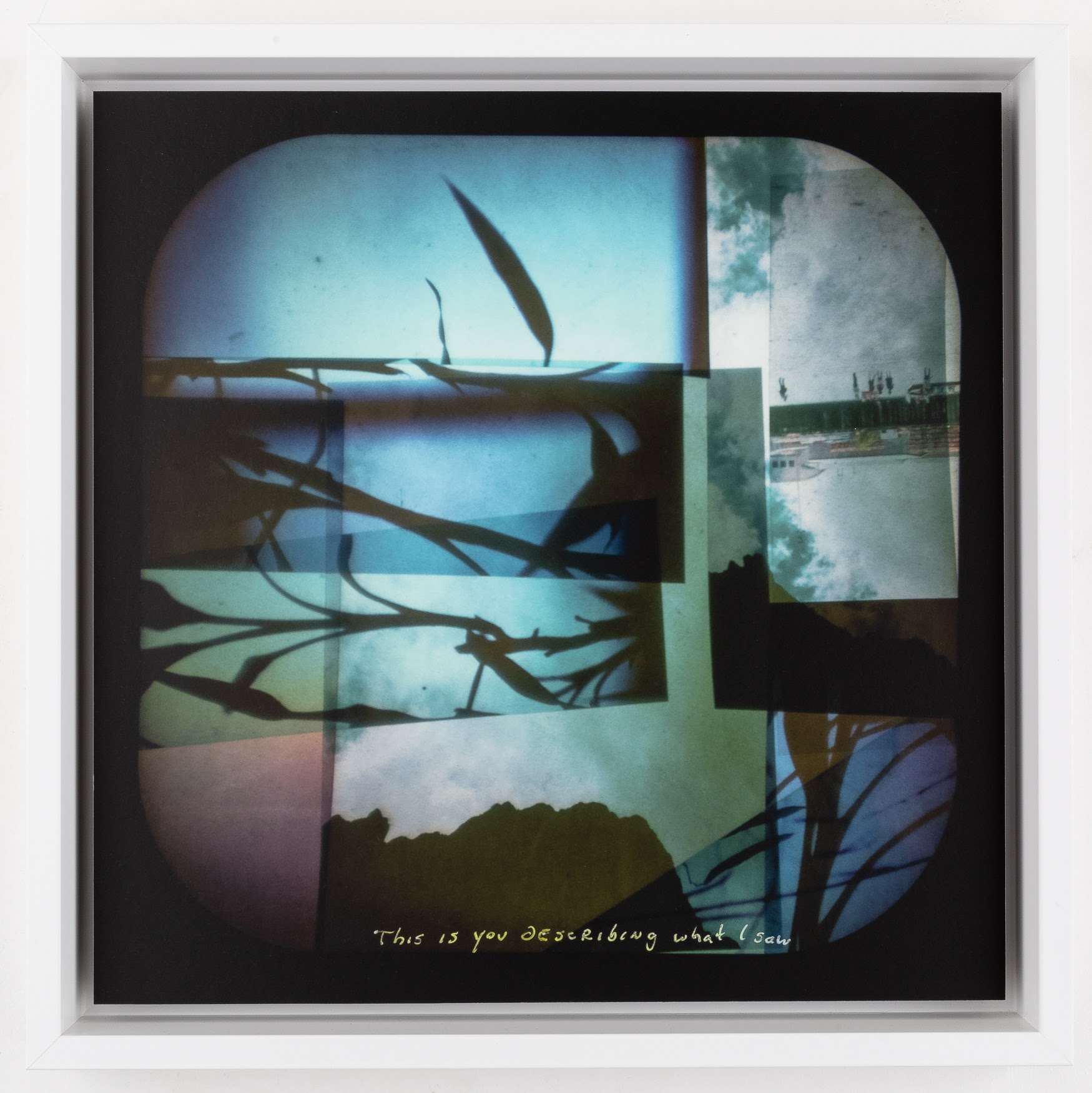
It moves forward, always | timo fahler | Aneesa Shami Zizzo: Reclamation | Judy Fiskin: Some small memories | Rita Letendre: Light/Dark/Movement | Ahree Lee: Fabrication
Cal State Long Beach, 1250 Bellflower Blvd., Long Beach, CA 90840
Tuesday, February 13 at 12:00 PM – 5:00 PM
Ends May 9, 2024
Ends May 9, 2024
It moves forward, always | Main Gallery
It moves forward, always explores photography’s ability to connect and reveal multiple timelines: geologic, social, imagined, or historical. The exhibition brings together nine artists including Laura Aguilar, Ilana Harris-Babou, Pao Houa Her, Sky Hopkina, Tom Jones, Hasabie Kidanu, Tarrah Krajnak, Dionne Lee, and Daniel Ramos whose lived experiences and critical perspectives engage themes surrounding land, place, and memory.
Whether excavating historical traces in the natural world, giving architectural shape to latent memory, or performing within the complexities of the landscape, this inter-generational group of artists offers ways for sensorial and embodied engagements with time. We invite you to view the artists’ work with an openness not limited by the lens of curatorial vision, but by the ability of the works to communicate visually and be expanded by other works throughout the exhibition. We encourage museum viewers to experience the unresolved, revel in the poetic, and arrive at multiple possible meanings.
Organized by Paul Baker Prindle, Carolyn Campagna Kleefeld Contemporary Art Museum Director; Lacey Lennon, Assistant Professor of Photography; and Rebecca Sittler, Professor of Photography, California State University, Long Beach.
Funding support for this exhibition is graciously provided by the Carolyn Kleefeld Endowment, The Constance W. Glenn Endowment, the Brooks Endowment, Arts Council for Long Beach, and Instructionally Related Activities funding from Associated Students, Inc.
-
timo fahler
Blending Christian and Aztec traditions, timo fahler's stained-glass panels speak to his Mexican American heritage. The works, both made in 2022, are titled Tlaloc, Chalchiuhtlicue and the great flood and Tlaltecuhtli and the Creation Myth and depict Aztec gods and creation myths. The artist’s use of glass alludes to the medium’s use in religious settings and places symbols of cultural hybridity in a reverential context. Casting double images upon the wall, these works encourage viewers to contemplate dual identities at work in personal mythology.
-
Aneesa Shami Zizzo: RECLAMATION
Aneesa Shami Zizzo considers the process of constructing and reclaiming one’s identity by attending to shared memory. Repurposing discarded materials, such as thrifted and gifted yarn, fabric samples, and old magazines, Shami Zizzo creates weavings, appliqued tapestries, and paper collages that become embedded with cultural traditions and personal narrative. Her work echoes her experiences as a second-generation Arab American and expresses notions of the cyclical nature of life and self-reflection.
-
Judy Fiskin: Some small memories
Originally produced as part of Long Beach: A Photography Survey, a project co-organized by our Museum and the Center for Southern California Studies in Visual Arts in 1980, Judy Fiskin's photographs capture the evolving landscape of Long Beach and Signal Hill. Her images document rapid city development and highlight the architectural erasure that came with growth. Shot in stark black and white and printed in miniature scale, the works evoke the fleeting nature of time and memory.
-
Rita Letendre: Light/Dark/Movement
Rita Letendre's prints curated from the Museum’s permanent collection explore the tension between light and dark, creating a dynamic sense of movement. Created in 1967, featured works reflect her exploration of the physical and psychological effects of color and form through crisp geometric abstraction.
-
Ahree Lee: Fabrication
Ahree Lee's installation, Fabrication, considers the intersection of technology, labor, and gender through three components: TEXTILE 1.0, Binary System, and Tomorrow, Today. Lee explores coded signifiers within 20th century modernist technological frameworks and ponders consequential forks in our cultural history. Installations reference kitchen tools, mid-century design, textile crafts, and early computer programming. Through these multilayered allusions to sociotechnical development, Fabrication asks us to imagine what an alternative future could look like if technology had evolved differently.
-
Arthur Tress: Photographs from the Collection
Vibrantly colored images and archival materials originally from Arthur Tress’s 1994 CSULB exhibition, Requiem for a Paperweight are on view in the Prints and Drawings and Archives Room. Narrating existential crises of an office worker navigating capitalist society, Tress described this series of work as a “meditation on the destiny...of an individual contemplating his own definitive departure from existence.”
- ✨Curate LA Partner
